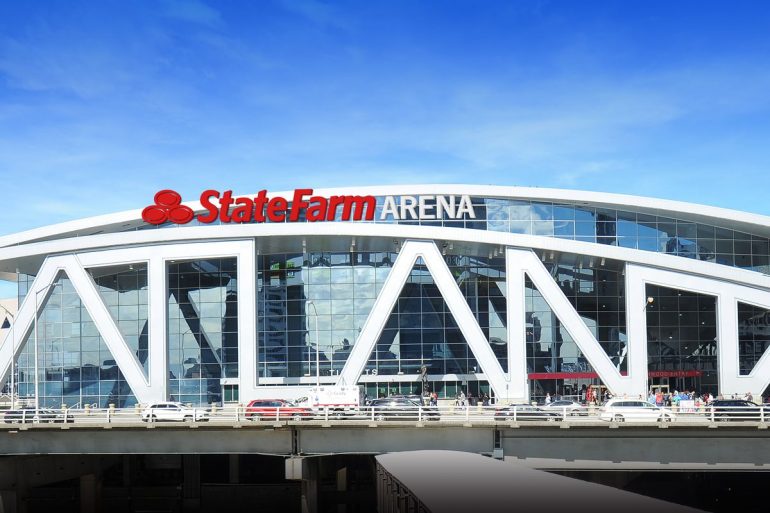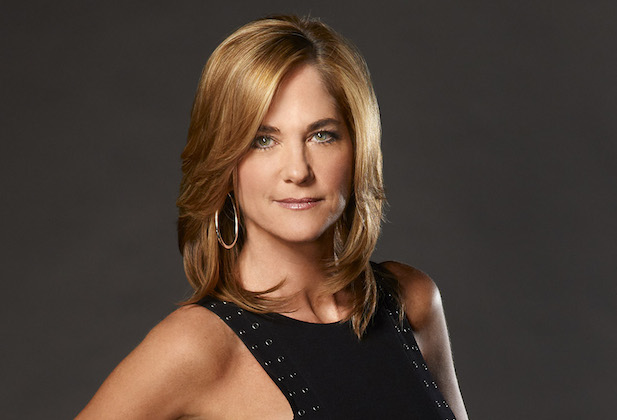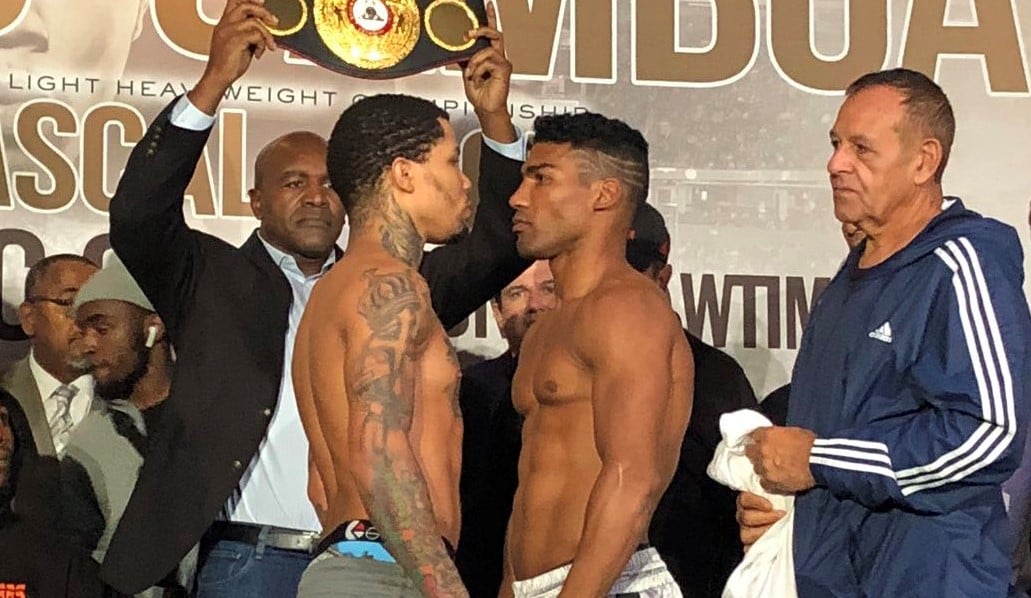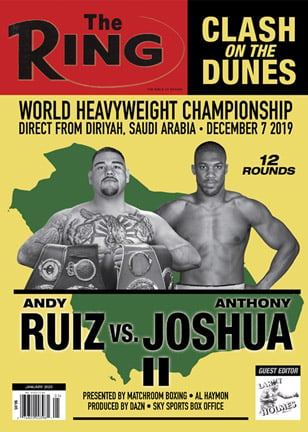The Travelin’ Man goes to Atlanta: Part One

Friday, December 27: Not too many years ago, boxing, especially in the United States, was a sport that assumed a submissive posture between September and December. That’s because during those years, “The Sweet Science” dared not compete against the monetary clout and mainstream attention commanded by college and NFL football, the appeal of Major League Baseball’s playoff chase and World Series and the twin launchings of the NBA and NHL regular seasons.
The environment that existed then contributed to this bunker mentality. First, boxing willingly operated with one glove tied behind its back, thanks to its decision to cut off widespread access to its biggest attractions in the name of maximizing profits and purses. While the superstars of the other major sports could be seen on free, terrestrial network TV or on basic cable channels, despite the ever-escalating salaries, boxing’s biggest names competed on pay-only platforms, especially premium cable and pay-per-view. Second, this access gap extended to the around-the-clock, around-the-calendar treatment the other sports received from two main outlets: (1) the ubiquitous sports networks’ daily programming and highlights shows and (2) cable channels devoted entirely to their given leagues (NFL Network, MLB Network, NBA TV, NHL Network). Even sports that are considered secondary in the U.S. market, such as tennis and golf, have stand-alone networks to preach the good word. Only boxing – with its Wild West power structure and prohibitively litigious attitude regarding the showing of vintage footage that would have made for terrific filler content – didn’t (and still doesn’t) have the collective will or the cooperative spirit needed to launch a viable, comprehensive and centrally-located “Boxing Network” that could compete on a level playing field.
Despite all the headwinds boxing has faced – self-inflicted and otherwise – it remains the most resilient of sports. And there is reason to believe that it may yet be a major player in the long game.
In the closing days of this century’s second decade, boxing has resurrected its fourth-quarter boldness at a time when the other sports are fighting to maintain their collective grip. One primary reason is boxing is at the forefront of the streaming revolution that has transformed how live sports are delivered as well as how much customers are charged for access. ESPN+, DAZN, RingTV.com, Facebook Live and other Internet-based platforms make it possible for even the most ardent boxing fans to get their fix of fisticuffs, especially since most of these shows include even the deepest of the deep undercard fights. Instead of the vicious circle that has plagued boxing for years, the sport is feeding off a circle of benevolence: More access to more fights begets more eyes, more eyes beget recognition, recognition begets bigger ratings, bigger ratings beget bigger money and bigger money begets (and justifies) expansion.
How expansive has December 2019 been for boxing? Consider: So far this month, CompuBox has compiled research and provided live data for 11 broadcasts between December 5 and December 23. December 7 alone saw the company work a trio of shows – the Anthony Joshua-Andy Ruiz II card on DAZN, the ESPN+ program topped by Emanuel Navarrete-Francisco Horta and the Showtime telecast headed by Jermall Charlo-Dennis Hogan. These “all-hands-on-deck” dates have been plentiful in 2019 and the extraordinary pace shows no sign of slowing.
In fact, boxing has one more major show in the U.S. before the end of the year and it is this show that has this “Travelin’ Man” hitting the road for the 23rd time since January 9. This “Showtime Championship Boxing” tripleheader will be headlined by Gervonta Davis versus Yuriorkis Gamboa at lightweight and supported by light heavyweight Jean Pascal against Badou Jack, as well as a 10-rounder between former IBF super middleweight titlist Jose Uzcategui and Lionell Thompson. If any card illustrates boxing’s pugnacious attitude toward the other sports, it is this one. The reason: Not only is this show taking place on the same day as the first College Football Playoff semi-final between top-ranked LSU and fourth-seeded Oklahoma, it will be staged at State Farm Arena in Atlanta – the home of the NBA’s Atlanta Hawks that is virtually next door to the site of the football game (Mercedes-Benz Stadium). As if to make the head-to-head challenge even bolder, only one of the six TV fighters – Davis – has a link to Atlanta. (The Baltimore native has reportedly bought a second home there.) We know that LSU-Oklahoma will produce a sell-out and it will be interesting to note how many seats will be filled for Davis-Gamboa.
For me, this show will represent the first time I’ve worked a card emanating from Atlanta. I’ve traveled through Hartsfield Jackson Atlanta International Airport to work other cards – most recently the ill-fated show in Flint, Michigan, that had paired Claressa Shields and Ivana Habazin – but here I will be at ringside inside the State Farm Arena, which will be hosting its first boxing card.
In boxing circles, Atlanta is best known for three reasons. First, the city hosted Muhammad Ali’s first fight following his three-and-a-half-year exile (his first fight with Jerry Quarry in October 1970). Second, it staged the 1996 Olympics and a boxing tournament that saw a galaxy of future champions compete – Floyd Mayweather Jr., Wladimir Klitschko, Vassiliy Jirov, David Reid, Beibis Mendoza, Masibulele Makepula, Eric Morel, Omar Narvaez, Joan Guzman, Julio Pablo Chacon, Robert Peden, Artur Grigorian, Leo Dorin, David Diaz, Fernando Vargas, Daniel Santos, Markus Beyer, Zsolt Erdei, Sven Ottke, Antonio Tarver, Julio Cesar Gonzalez, Stipes Drews, Ruslan Chagaev and Istvan Kovacs. Finally the Omni hosted arguably the greatest cruiserweight title fight in history (the first meeting between Evander Holyfield and Dwight Muhammad Qawi) and a legendary near-disaster for “The Real Deal” (his off-the-floor seventh round TKO over Bert Cooper).
The occasion of my maiden show in Atlanta prompted me to conduct a deep dive on the city’s boxing history. The results were quite educational:
* If one chooses to recognize WBA secondary titles as legitimate (I don’t but Showtime does), then the Pascal-Jack bout will be billed by the network as the first match for a “major” belt involving male fighters since IBF/WBA heavyweight titlist Holyfield outpointed Vaughn Bean at the Georgia Dome on September 19, 1998. If one chooses to recognize minor titles involving female fighters (I don’t and neither does Showtime), Atlanta has hosted three such bouts: Laila Ali KO 3 Gwendolyn O’Neil for the vacant International Women’s Boxing Federation light heavyweight title on September 24, 2004 at the Phillips Arena (the previous name for the State Farm Arena and a non-televised bout); Laila Ali KO 8 Cassandra Giger for the Women’s International Boxing Association super middleweight belt on February 11, 2005 at the Phillips Arena (which aired on ESPN 2) and Letitia Robinson KO 1 Monica Nunez for the Women’s International Boxing Association middleweight belt on the Ali-Giger undercard.
* Besides Holyfield-Qawi I and Holyfield-Cooper, Atlanta has hosted only two other widely recognized world championship fights – Jack Britton W 10 (newspaper decision) Ted “Kid” Lewis for the welterweight championship on March 6, 1918 at the Armory Auditorium and Tim Witherspoon MD 15 Tony Tubbs for the WBA heavyweight title on January 17, 1986 at the Omni.
* While the number of world title fights in Atlanta is small, the list of notables who have fought there is large. Besides those listed in previous paragraphs, the roll call includes Battling Levinsky, Battling Nelson, Abe Attell, Freddie Welsh, Jess Willard, Ad Wolgast, Billy Miske, Sam Langford, Jack Dempsey, Benny Leonard, Johnny Dundee, Mike O’Dowd, Sam McVey, Harry Wills, Tiger Flowers, Young Stribling, Jack Dillon, Kid Norfolk, Petey Sarron, Paul Berlenbach, Cocoa Kid, Maxie Rosenbloom, John Henry Lewis, Teddy Yarosz, Ken Overlin, Freddie Cochrane, Beau Jack, Bob Foster, Jimmy Ellis, Pernell Whitaker, Tyrell Biggs, James “Buster” Douglas, Trevor Berbick, Lennox Lewis, Michael Moorer, Leon Spinks, O’Neil Bell, Travis Simms, Joey Gamache, Jorge Eliecer Julio, Christy Martin, John Ruiz, Iran Barkley, Luis Santana, Lou Del Valle, Paul Williams, Yuniel Dorticos, Sergey Kovalev, Evgeny Gradovich, Roy Jones Jr. and Devin Haney. Haney, at least until tomorrow, will be the most recent former or future champion to appear in Atlanta, as he stopped Hamza Sempewo at the Buckhead Fight Club on November 4, 2017.
* On June 7, 1978, Cathy Davis – the first female fighter ever to grace the cover of The Ring – fought a four-round no-decision against Ernestine Jones at the City Auditorium, the first women’s bout ever staged in the city.
* Not only has Atlanta hosted a galaxy of stars, it has seen more than its share of obscurities who also happened to carry unusual or humorous sobriquets into the ring. Just imagine seeing the following names on a given fight poster hung somewhere around town: Rat the Rounder, Pat Hoe, Battling Minor, Yankee Schwartz, Young King, Joe Superior, Kid Ruff, Kid Wonder, Kid Sober, Greek Blondy, Kid Bear, Bob Lightning, Slim Morrison, Kid Lamb, Kid Klipper, Stumpy Sullivan, Rabbit Palmer, Kid Rodman, Scrappy Smith, Bearcat Barnes, Silent Happy, Boll Weaver, Brown Mule (who fought Boll Weaver to a four-round no-decision on July 29, 1920), Fearless Ferns, Battling Moon, Shifty Allen, Tugboat Wilson, Dummy Barrington, Iron Dempsey, Dynamite Dixon, Peewee Burns, Digger Brown, Dixie Rose, Kid Hogshead, Rough House Ware, Young Paul Revere, Red Herring, Joe Mexico, Walloping Wop, Knockout Gilkerson, Boots Antley, Hooty Flahive, Young Mayo, Sammy Duplex, Jamaica Kid, KO Pride, Boney Lewis, Chief Otalvaro, Kid Huckleberry, Tanks Grantham, Happy Hunter, Gunboat Farley, Pinky May, Farmer Joe Cooper, Benny Touchstone, Battling Temple, Honeyboy Snipes, Dark Night, King Soloman, Cowboy Kid, Kid Junkman, Black Panther, Whirlwind Pryor (forerunner of Aaron?), Battling Jimbo, Tommy Billiards, Battling Bozo, Wingo Robinson, Lightning Howard, Arkansas Kid, Battling Cyclone, Clark University, Cyclone Kimball, Jimmy Bad Eye Munroe, Johnny Chevrolet, Tot Wilson, Grumpy Gordy, Battling PG, Straight Eight Dunn, Ace of Spades, Kid Rocky, Baby Bear, Father Lumpkin, The Wildcat, Battling Snook, Cracker Jack Webb, The Unknown, KO Huff, Blackey Black, Spark Plug Roundtree, Dapper Doyle, Panther Jim, Battling Blackjack, Red Popgood, Bull Johnson, Prince Albert (not in a can), Kid Moorehead, Straight Eight Pryor, Midget Mexico, Young Popeye, Bandana Kid, Ernest Butts II, Kid Carrecter, Sugar Boy Nando and Julius Erving III. Too bad there isn’t film of any of these guys in action – or of the ring announcer’s face when he introduced them.
* One show on February 7, 1914 at the Columbia Theatre had a quartet of “Kids” who lost – Kid Wonder, Kid Kelly, Kid Yorke and Kid Manman – and one “Kid” who won (Kid Dukes, who defeated Kid Kelly via third round disqualification). No kidding.
*
The arrival of the winter solstice six days earlier would have normally signaled the start of the annual “Snow Wars” for me but the last several days have brought forth most welcomed warmth. Christmas Day in Friendly, West Virginia saw the temperature soar toward 60 degrees and produced a sky that was sunny instead of overcast. That positive meteorological momentum continued today, for by the time I left the house at 8:15 a.m. the mercury read 48 degrees – nearly 20 degrees warmer than the normal high for this time of year.
Thanks to the absence of school buses, red lights and construction projects, I made magnificent time on my drive to Pittsburgh International Airport. It usually takes me between two hours 15 minutes and two-and-a-half hours to complete the trek but here I arrived in a little under two hours and four minutes. After getting my ticket for the extended parking lot, a security guard seated in the middle of the road casually pointed his left arm toward the “long-term” lot. Not sure if his gesture was intended for me, I inched my car closer to him and, as I did, he pointed a little more vigorously. At this, I rolled down my window and asked him if I had interpreted him correctly. I had. The reason: The massive influx of travelers during 2019’s holiday rush filled the entirety of the extended lot, which forced the airport to make available “long term” spaces at extended lot prices. So while the early bird gets the worm, this “late bird” got the deal.
The quicker-than-expected drive and the shorter-than-expected walk to the terminal entrance allowed me to have a leisurely brunch at the Airmall food court, after which I walked to Gate D 80 to await my direct flight to Atlanta on Delta, a flight that had been scheduled to leave at 1:10 p.m. – with emphasis on the word “scheduled.”
Of course, that didn’t happen. Here’s why: According to the pilot who addressed us at the gate shortly before boarding, mechanical issues with the original plane forced an aircraft swap as well as a new flight crew and those transitions caused the delay. The good news was that our replacement plane was larger and roomier than the original. The even better news was that the change improved my seating position. On the original aircraft, I was placed in the first row of the main cabin, which would have required me to stow both bags in the overhead bin but here I was several rows back of the main cabin, which allowed me to stow my clothes bag in the overhead bin and my laptop bag (where I keep my reading material) underneath the seat.
While awaiting the flight, I was joined at the gate by a Southwest flight attendant named Peggy who bore a striking resemblance to soap actress Kassie DePaiva…

Actress Kassie DePaiva. Photo credit: Chris Haston/NBC
…similar hairstyle, facial structure, slimness and age range (though probably younger) but different speaking voice (DePaiva, a native of Kentucky, has a pronounced southern accent while Peggy doesn’t). She was in a buoyant mood because she had expected to be stuck in Pittsburgh for most of the day but the switch to a larger plane created enough extra seats for her to be rebooked on this flight. And wouldn’t you know it? Peggy’s assigned seat was one row behind mine. However she ended up next to me in the middle seat because the woman occupying the aisle location of her row wanted to be seated with her husband and the empty seat in my row allowed Peggy to move up and for the woman’s husband to move in. By the way, another woman that had been seated next to Peggy and me at the gate was the person who ended up in the aisle seat of our row. Imagine that.
The plane left just a few minutes behind schedule and touched down in Atlanta at 3:06 – the exact time the original aircraft had been set to arrive. After deplaning, I took a taxi to the crew hotel – the Westin Peachtree Plaza – and, upon checking in, I asked for directions to the State Farm Arena.
“See that exit in the back,” she said. “Just go through there; turn left and keep going.”
Of course, it ended up being more complicated than that – much more complicated.
The route I used took me directly to Centennial Park – the site of the infamous bombing that is the subject of the current Clint Eastwood film “Richard Jewell” – and while the directions on the Showtime production memo successfully got me to the State Farm Arena, I couldn’t connect the dots on how to get to the production truck. My search took me around the entire outer perimeter of the property but with the help of a sympathetic security guard, I was guided to the elevator that led me to the truck. Once inside the truck, the mandatory equipment check was finished within five minutes.
The walk to and from the arena illustrated just how close I was to the much-hyped game between LSU and Oklahoma; the majority of people I saw were wearing team gear and I saw several street vendors selling memorabilia associated with the event. I passed by a convoy of parked buses bearing the Sooners’ insignia outside the team hotel and I spotted the nearby College Football Hall of Fame.
After returning to the hotel, I ordered room service and enjoyed a quiet evening before turning out the lights shortly after 1 a.m.
Saturday, December 28: I awakened at 6 but chose to doze until 7. After finishing the morning routines, I spent a few hours producing many of the words you’ve read so far, then, when I reached a good stopping point, decided to venture out with the intent of visiting the College Football Hall of Fame.
It didn’t turn out that way.
Along the way, I ran into veteran technical director Rick Tugman, who I hadn’t seen in a while. We spent a few minutes catching up and split up once he reached his destination. Just as was the case yesterday, virtually everyone I saw was wearing football gear and while my eyes took in a sea of LSU purple, I noticed mere pockets of Sooner red. Once I got within sight of the Hall of Fame, I noticed a line awaiting entry that appeared to be in the dozens, if not the hundreds. Since I intended to leave for the venue at 1 p.m., I figured that if I persisted, I would end up spending the majority of my time in line instead of inside. Because of this, I decided to return to the hotel, get some more work done and leave for the State Farm Arena as previously scheduled.
Like yesterday, I experienced an interesting chance encounter during my trek. I blended in with a small group of Oklahoma fans, the nearest of which was a senior citizen accompanied with whom I assumed was his granddaughter. Both were wearing the jersey of number 47, who turned out to be redshirt freshman kicker/punter Gabe Brkic of Chardon, Ohio. The man with whom I was speaking happened to be Gabe’s grandfather, a native of Croatia now living in Cleveland. Up until then, I didn’t have a Tiger or a Sooner in this fight but because of Gabe’s grandfather – and because the West Virginia Mountaineers’ season has already ended – my today-only rooting interest will be with WVU’s Big 12 colleague Oklahoma.
I arrived at the arena shortly before my 1:30 p.m. call time and by 2:30, all the pre-telecast tasks were completed. Therefore I had the luxury to converse with whichever ringsiders would speak with me. They included future Hall of Fame judge Steve Weisfeld – who ended up scoring the main event – and Hall of Fame broadcaster/writer/historian Steve Farhood, who not only would be the ringside scorer for the Showtime portion of the night but also the color commentator on the show streaming on the network’s Facebook page.
The undercard fights were witnessed by relatively few people and that remained the case even as the first of the final three fights commenced. It was clear that if a sell-out were to occur – and a sell-out was what was expected – it would be solely because of Davis.

Speaking of Davis, he made big news the previous day for two negative reasons: His missing weight on the first try and the shove that ignited a 20-minute brawl – a brawl that dangerously swirled about the wheelchair-bound Paul Williams, who was on stage. Davis returned to the scale shortly thereafter and got below 135 but the strain required to do so could be seen on his face and in his subdued demeanor.
In terms of his public behavior, Davis appears to have been vacillating between two important figures in his boxing life: Promoter (and shoo-in Hall-of-Famer) Floyd Mayweather Jr. and the chronically troubled four-division titlist (and friend) Adrien Broner. While Mayweather’s persona has created neon-bright division (those who love him LOVE him and those who hate him HATE him), he has always been a total professional in terms of his preparation and his commitment to year-around conditioning. Even between fights, “Money” remained in excellent shape and, in that respect, his behavior mirrored that of freshly-minted Hall-of-Famer Bernard Hopkins. Conversely Broner – who dearly wanted to become Mayweather 2.0 – has taken multiple hits to his reputation, thanks to his run-ins with the law and his “Screw you” attitude toward fans and media. Although he has won widely recognized titles in four weight classes, Broner lost two of them on the scales (the WBO junior lightweight title before his defense against Vicente Escobedo and the WBA junior welterweight belt preceding his fight with Ashley Theophane) and ongoing legal issues had cast a cloud over the Theophane fight. Every time his face is shown on a big screen, the audience unleashes throaty boos, boos that Broner laughs off before flipping the occasional bird.
Like Broner, Davis lost a championship on the scale when he weighed 132 before his IBF junior lightweight title defense against Francisco Fonseca – a fight which was on the undercard of Mayweather-Conor McGregor, by the way – and his burgeoning brand took a hit when he produced a sub-par performance before scoring the eighth-round KO. But Davis regained most of his luster in his next fight when he made weight with ease before destroying Jesus Cuellar in three rounds to capture the WBA’s “super” belt at 130 and his two subsequent stoppage victories against Hugo Ruiz and Ricardo Nunez extended his KO streak to 13 – the third longest among fighters currently ranked by The Ring (IBF/WBC light heavyweight king Artur Beterbiev and junior welterweight contender Subriel Matias are both 15-0 with 15 KOs). The Nunez fight was billed as his homecoming fight in his city of birth (Baltimore) and the Gamboa bout was touted as a homecoming fight in his adopted hometown (Atlanta). Davis had been showered with praise and attention outside the ring – a parade in his honor was one such event – and it appeared that he had shaken off the negative vibes he produced before and during the Fonseca match.
But then came the events of the Gamboa weigh-in and while he ultimately avoided matching Broner with two lost titles on the scale, the momentum he had built in the last two years had been stalled. However boxing is the ultimate “Show me” sport and, despite the events of the weigh-in, Davis had the opportunity to make things right inside the ring. Would he? We’ll see.
*
Lee Groves is a boxing writer and historian based in Friendly, West Virginia. He is a full member of the BWAA, from which he has won 16 writing awards, including two first-place awards, since 2011. He has been an elector for the International Boxing Hall of Fame since 2001 and is also a writer, researcher and punch-counter for CompuBox, Inc. He is the author of “Tales from the Vault: A Celebration of 100 Boxing Closet Classics” (available on Amazon) and the co-author of “Muhammad Ali: By the Numbers” (also available on Amazon). To contact Groves about a personalized autographed copy, use the email [email protected] or send him a message via Facebook.
Struggling to locate a copy of The Ring Magazine? Try here or
Subscribe
You can order the current issue, which is on newsstands, or back issues from our subscribe page.
















